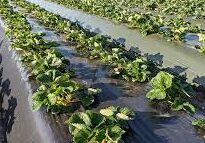EOHSI Member Philip Demokritou featured in Civil Eats: Can Agriculture Kick Its Plastic Addiction?

Plastics are tightly woven into the fabric of modern agriculture. Black polyethylene“mulch film” gets tucked snugly around crop rows, clear plastic sheeting covers hoop houses, and most farmers use plastic seed trays, irrigation tubes, and fertilizer bags.
These synthetic polymer products have often been used to help boost yields up to 60 percent and make water and pesticide use more efficient. In China, for example, research shows that plastic field covers keep the soil warm and wet in a way that boosts productivity considerably; an additional 15,000 square miles of arable land—an area about the size of Switzerland—would be required to produce the same amount of food.
But plasticulture, or the use of plastic products inagriculture, also comes with a wide range of known problems. Plastic contaminates fields at a muchgreater scale than it does our oceans, posing an acutethreat to soil health and food security. Researchshows that as the chemicals from degrading debrisleach into the soil, their persistence decreases crop productivity while snaking up the food chain, appearing in earthworm guts and even human placentas.
In the larger scope, agriculture accounts for a smallslice of the plastics pie—less than 3 percent of the annual 440 million tons produced worldwide. Yet their pervasive use—along with farmland, plastics cover everything from individual seeds to bales of hay and packaged produce—hasallowed them to plant themselves deeply in our food supply. “Relatively speaking, it’s asmall volume,” says Philip Demokritou, vice chair of Rutgers University’s environmental occupational health and justice department and author of a recent international report on plastics in agriculture. “But it carries the highest risks.”
Source: Civil Eats – December 4, 2023
Copyright © 2021, Rutgers, The State University of New Jersey

